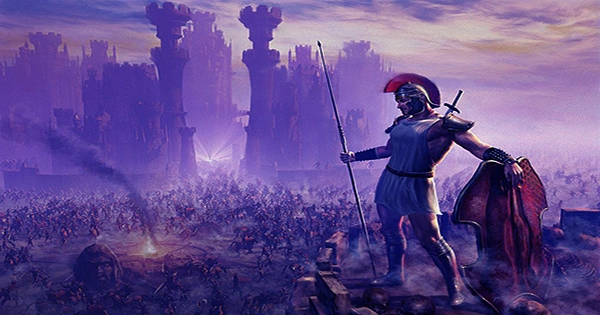People have been killing each other from the beginning of time. However, it appears that organized fighting did not emerge until the Neolithic Age when certain tribes began farming and living in permanent communities. According to archaeological evidence, Neolithic warfare evolved from small-scale battles and killings to lengthier and more sophisticated wars.
Only in the broadest sense did early humans engage in battle. “For the majority of our species’ history, it would have been very small, unorganized, decentralized raids similar to what you see in chimps,” says Luke Glowacki, an assistant professor of anthropology at Boston University and a specialist on the development of war. During this time, he claims, “a group of individuals [might] encounter someone from another group and kill them.”
Agriculture’s Rise—Warfare’s Rise: Agriculture first appeared in the Fertile Crescent some 12,000 years ago, and population concentrations expanded even in places without crops. “Agriculture is not required” for conflict, according to Glowacki, “but it certainly facilitates it.”
Researchers have uncovered no conclusive evidence that organized warfare existed before the so-called Neolithic Revolution. However, basic fighting is known to have erupted soon after. According to a 2016 study, a massacre occurred 10,000 years ago in Lake Turkana in Kenya, with bodies showing traces of bound hands, arrow wounds, and fractured skulls.
“I consider this to be the most reliable early evidence of a massacre,” Glowacki, who was not involved in the study, adds. “These are hunter-gatherers, but with some food storage and likely lower mobility.” Massacres, he says, take more coordination and planning than “tit-for-tat raiding,” are “indicative of more severe war,” and are likely to occur when humans shift from mobile to sedentary lifestyles.
A massacre occurred around 7,000 years ago in modern-day Germany when attackers supposedly tormented their victims—including shattering their shin bones—before killing them. Similar Neolithic killings have been discovered in Germany, Austria, Croatia, and France, among other places. Meanwhile, the people of Jericho, one of the world’s oldest cities, built city walls in 8000 B.C., ostensibly to keep out attackers.
According to a study published in the journal Scientific Reports in November 2023, such Neolithic conflicts were thought to be a “mixture of rapid assaults or short raids, generally lasting no more than a few days and affecting no more than 20 or 30 individuals.”
Long-term fighting began over 5,000 years ago: According to the study, which examined the skeletal remains of 338 people who died in northern Spain between 5,400 and 5,000 years ago, some later Neolithic battles may have been more complicated than previously thought.
These remains, discovered by a bulldozer in 1985, were once thought to be another Neolithic slaughter. However, by examining the skeletal injuries, which disproportionately impacted males and were mostly non-fatal (something not seen at other Neolithic mass-fatality sites in Europe), the study’s authors concluded that a lengthy conflict had lasted months or years.
“We believe we are witnessing the outcome of a regional inter-group conflict,” lead author Teresa Fernández-Crespo, an archaeologist at Spain’s University of Valladolid, told HISTORY via email. She goes on to say that “resource competition and social complexity could have been a source of tension, potentially escalating into lethal violence.”
Agriculture may have advanced in tandem with conflict as the Neolithic period proceeded. “Because they had to work together and cooperate to irrigate the land, the idea of working together and cooperating also gave rise to armies,” says Alfred S. Bradford, chair of ancient history at the University of Oklahoma and author of With Arrow, Sword, and Spear: A History of Warfare in the Ancient World. “And, of course, they had a lot to defend because they were defending their farmland.”
In the Middle East and elsewhere, copper tools and weapons began to replace stone arrowheads, spear tips, blades, and axes. Early civilizations in Mesopotamia and North Africa had formed massive armies with official leaders, chains of command, discrete units, and supply systems by the time the Bronze Age arrived around 3300 B.C. These literate and artistic cultures could record their military campaigns.
The so-called Standard of Ur, for example, depicts an approaching Sumerian army from around 2500 B.C., complete with wheeled wagons and infantry, but the Narmer Palette represents an Egyptian conquest from around 3000 B.C.
Large-scale combat took longer to arrive in Europe outside of Greece. However, by 1200 B.C., a fight near the Tollense River in Germany had over 4,000 soldiers. Armies also grew in areas like Peru, Mexico, and China. Warfare is beginning to resemble what it is today all around the world.
















